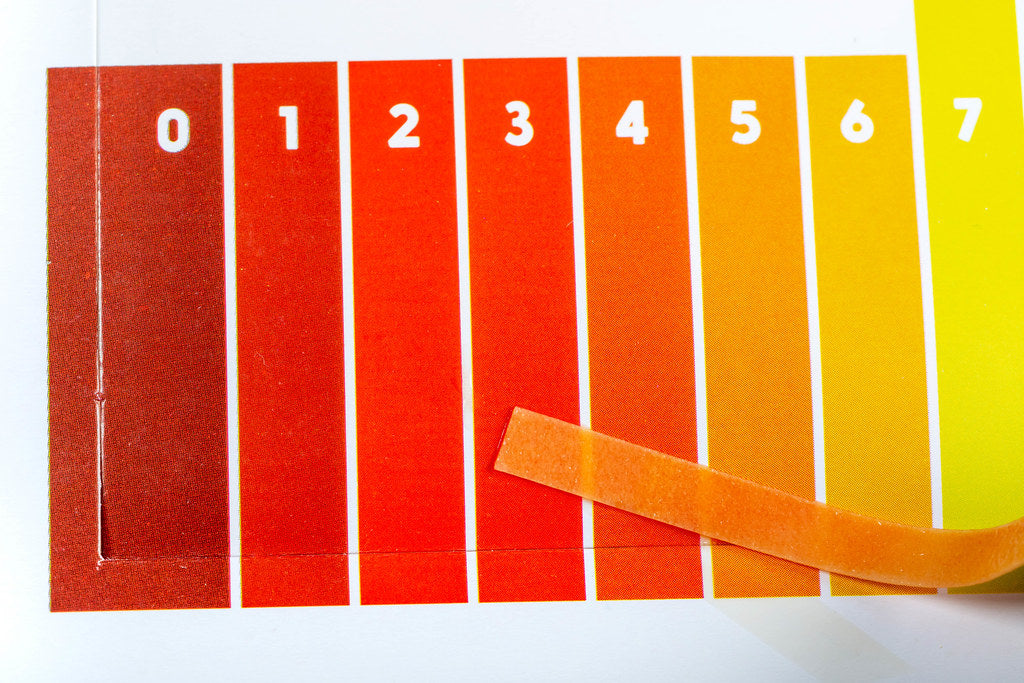You can make paper test strips to determine the pH of an aqueous solution by treating filter paper with any of the common pH indicators. One of the first indicators used for this purpose was litmus.
Litmus paper is paper that has been treated with a specific indicator—a mixture of 10 to 15 natural dyes obtained from lichens (mainly Roccella tinctoria) that turns red in response to acidic conditions (pH 7). When the pH is neutral (pH = 7), then the dye is purple.
History
The first known use of litmus was around 1300 CE by Spanish alchemist Arnaldus de Villa Nova. The blue dye has been extracted from lichens since the 16th century. The word "litmus" comes from the old Norse word for "dye" or "color."
While all litmus paper acts as pH paper, the opposite is not true. It's incorrect to refer to all pH paper as "litmus paper."
Fast Facts: Litmus Paper
• Litmus paper is a type of pH paper made by treating the paper with natural dyes from lichens.
• The litmus test is performed by placing a small drop of sample onto the colored paper.
• Usually, litmus paper is either red or blue. Red paper turns blue when the pH is alkaline, while blue paper turns red when the pH turns acidic.
• While litmus paper is most often used to test the pH of liquids, it can also be used to test gases if the paper is dampened with distilled water before exposure to the gas.

Litmus Test
To perform the test, place a drop of liquid sample on a small strip of paper or dip a piece of litmus paper in a small specimen of the sample. Ideally, don't dip litmus paper in an entire container of a chemical—the dye could contaminate a potentially valuable sample.The litmus test is a quick method of determining whether a liquid or gaseous solution is acidic or basic (alkaline). The test can be performed using litmus paper or an aqueous solution containing litmus dye.
Initially, litmus paper is either red or blue. The blue paper changes to red, indicating acidity somewhere between the pH range of 4.5 to 8.3. (Note that 8.3 is alkaline.) Red litmus paper can indicate alkalinity with a change to blue. In general, litmus paper is red below a pH of 4.5 and blue above a pH of 8.3.
If the paper turns purple, this indicates the pH is near neutral. Red paper that does not change color indicates the sample is an acid. Blue paper that does not change color indicates the sample is a base.
Remember, acids and bases refer only to aqueous (water-based) solutions, so pH paper won't change color in non-aqueous liquids such as vegetable oil.
Litmus paper may be dampened with distilled water to give a color change for a gaseous sample. Gases change the color of the entire litmus strip since the whole surface is exposed. Neutral gases, such as oxygen and nitrogen, do not change the color of the pH paper.
Litmus paper that has changed from red to blue can be reused as blue litmus paper. Paper that has changed from blue to red can be reused as red litmus paper.
Limitations
The litmus test is quick and simple, but it suffers from a few limitations. First, it's not an accurate indicator of pH; it does not yield a numerical pH value. Instead, it roughly indicates whether a sample is an acid or a base. Second, the paper can change colors for other reasons besides an acid-base reaction.
For example, blue litmus paper turns white in chlorine gas. This color change is due to bleaching of the dye from hypochlorite ions, not acidity/basicity.
Alternatives to Litmus Paper
Litmus paper is handy as a general acid-base indicator, but you can get much more specific results if you use an indicator that has a more narrow test range or that offers a wider color range.
Red cabbage juice, for example, changes color in response to pH all the way from red (pH = 2) through blue (neutral pH) to greenish-yellow (pH = 12), plus you are more likely to find cabbage at the local grocery store than lichen. The dyes orcein and azolitmin yield results comparable to those of litmus paper.
This Article was originally published by Helmenstine, Anne Marie, Ph.D. "Litmus Paper and the Litmus Test." ThoughtCo, Aug. 26, 2020, thoughtco.com/what-is-litmus-paper-3976018.

